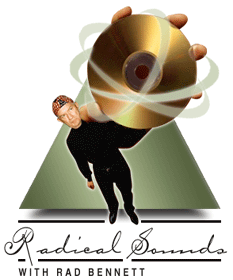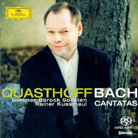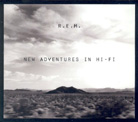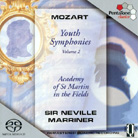 |
| April 1, 2005 Living Stereo Goes SACD . . . Again! BMG has just issued its second release in its series of RCA
Living Stereo SACDs -- ten more gems at an affordable price. As I noted in my report on the first group of titles, these are two- and
three-channel masters. Although the very earliest RCA Living Stereo recordings were
two-channel, it was not long before the masters were recorded with left, right, and
center channels. The latter had to wait for a good multichannel medium before they could
be heard as created; now that they have, they are revelations. BMG has just issued its second release in its series of RCA
Living Stereo SACDs -- ten more gems at an affordable price. As I noted in my report on the first group of titles, these are two- and
three-channel masters. Although the very earliest RCA Living Stereo recordings were
two-channel, it was not long before the masters were recorded with left, right, and
center channels. The latter had to wait for a good multichannel medium before they could
be heard as created; now that they have, they are revelations.
The standout this time is Fritz Reiner’s recording of Rimsky-Korsakov’s Scheherazade, with the Chicago Symphony Orchestra [66377-2]. This performance has always been highly regarded for its virtuoso playing and incisive momentum; RCA has released it several times on vinyl and regular CD, and many other companies have licensed its master tape. Throughout all of these I remained unmoved, clinging to my beloved Ansermet, Beecham, and Rossi versions. But no more -- this SACD has made me hear the light. The three channels anchor those fabulous Chicago winds so that their playing seems more virtuoso than ever, and the high-resolution DSD allows previously buried details to be easily heard. The bass drum in the last movement now has full impact, the upper percussion sparkles, the upper strings sound bright yet sweet. This version now stands at the top as the greatest recording of this popular orchestral showpiece. It would sound trite if I didn’t know it was true: to hear it in three-channel SACD is a breathtaking experience. And wait, that’s not all. This disc also includes an assured reading of Stravinsky’s Song of the Nightingale, just as well recorded. Another Living Stereo that goes to the head of the class is Jascha Heifetz’s dramatic reading of the Sibelius Violin Concerto [66372-2]. This three-channel SACD makes earlier transfers of this recording seem mere warmups. At the opening of the third movement, the basses set up the motor rhythm in the right channel with fierce clarity, and Heifetz enters at center stage to match them in intensity. And lest you think the great violinist was about nothing but flair, listen to the Glazunov Violin Concerto, also included on this disc. In its quieter moments, Heifetz spins out lyrical phrases with a tone like spun silk. High resolution reveals nuances only suggested before. Other three-channel highlights from this release include Charles Munch’s Boston Symphony recording of Debussy’s Images for Orchestra, which shimmer like a lake catching shafts of detailed light from a summer sunbeam [66374-2]. Morton Gould’s Jericho makes quite an impression as those fabled walls come musically tumbling down [66371-2]. Much of the two-channel material is also revelatory. The chief instance is Arthur Fiedler’s classic performance of Offenbach’s Gaîté Parisienne. This was made in 1954, and in 51 years it has not been beat, not even by Fiedler himself, who re-recorded it in the 1960s. The new SACD transfer sparkles. Upper percussion and woodwind details that were either buried or sounded forced in previous incarnations of this definitive reading now sound entirely natural and properly balanced. Its discmate, Respighi’s La boutique fantasque, sounds almost as good. Cheers to BMG for mining gold from its vaults in a proper manner. Would it were so with other companies, but it is not. Though we have seen some Mercury Living Presence SACDs and will be seeing more in a few months, and Telarc has released some of its two-channel recordings, other companies just keep grinding out CD reissues of previously recorded material as if they were so much fodder for the browser bins. Why not give such recordings a reason for re-release by issuing their two- and three-channel masters in their original forms on hybrid SACDs? They can still go in the browser bins, where they can still serve as cheaper impulse purchases for CD collectors. But those who know could also seek them out as SACD treasures. Speaking of that, here are three more diamonds to add to this month’s collection:
Many of Bach’s cantatas are heaven-storming works for full chorus and an orchestra containing resplendent brass and timpani. Others are quieter and more introspective, and it is three of this latter type that have been chosen for this elegant and eloquent SACD. While these works address death and the Christian conception of afterlife, they are not somber but comforting and life-affirming, speaking of death as a logical conclusion. Bass-baritone Thomas Quasthoff’s singing is very spiritual and comforting, his voice reminiscent of the young Dietrich Fischer-Dieskau’s. Quasthoff’s artistry is evident in every passage, yet it never gets in the way of delivery of the text. The support of the small chorus and orchestra is chamber-like in texture and nuance, and the recording is warm and detailed. Quasthoff is heard in the three front channels, the orchestra spread to the sides and slightly behind him. The Aria and Choral from BWV 56 is a special delight: Quasthoff is centered, the violin soloist slightly to the left and just behind him, and the continuo -- cello, double bass, chamber organ -- spread from center to right. At important points, the sopranos of the chorus intone the chorale from behind the main performers. The effect is gently magical. The proper use of the surround channels ensures that the singers and players up front have ultimate presence. I would be hard-pressed to imagine a better recording of these works. How can you top perfection?
After a several-month silence on the DVD-Audio front, Warner Bros. has suddenly released eight albums by the veteran rock band R.E.M. in new high-resolution, multichannel mixes by Elliot Scheiner. Each foldout package includes a DVD-A and a CD, the separate discs being an alternate approach to the DualDisc format. Also included are elaborate booklets with new notes, though no printed lyrics. Those are available onscreen from the DVD-A, which also provides a photo gallery and 20-minute video documentary. The set was written while the band was touring behind another album, so it’s part live, part studio, all mixed into a lively, eclectic, spontaneous whole. Most producers of multichannel pop recordings make me want to run for the bleachers to get outside the band, where I can hear, but Scheiner has always had a way of convincing me that more channels are better. In quieter numbers, such as the opening "How the West Was Won and Where It Got Us," the action is up front. The vocals are entirely in the center channel, which in my opinion is exactly where they need to be, freeing up the left and right channels for instrumental lines. This approach gives much more clarity than the more popular type of mix, which spreads the vocals across all of the front channels. The surrounds kick in noticeably in other tunes, such as the panned effects in "Leave," which gave me a feeling of being caught up in a claustrophobia quite in agreement with the lyrics. The CD, too, is excellent, and allows a listener to take the music along in the car. The other titles in this series are equally well handled: Green, Out of Time, The Best of R.E.M., Up, Automatic for the People, Reveal, and Monster.
Though not as profound as his later works in the form, Mozart’s early symphonies are loaded with charm, elegance, and high spirits, and are far beyond works written by the average teenage composer. Sir Neville Marriner’s performances are polished and spirited. The phrasing is crisp, the ensemble tight, the overall mood buoyant. These recordings were originally one of the quadraphonic efforts of Philips Classics, recorded in the 1970s, and the Pentatone producers and engineers have wisely chosen to leave them as such. Why try to improve perfection? That is the impression this disc gives. Balances of strings and winds, as well as within the string section, are ideal. The upper strings are sweet, even when playing loudly. The high-resolution recording really helps the violins. The bass line is full but never overbearing, and singularly focused. The rear channels provide ambience that helps the front soundstage achieve depth while conveying a good sense of the overall performing space. I had lost track of Pentatone during its recent change in distribution, and am delighted to be back in touch with the company. And Volume 1 is every bit as good as this one. ...Rad Bennett
Ultra Audio is part of the SoundStage! Network. |
 J.S. Bach: Cantatas:
Ich will den Kreuzstab gerne tragen, BWV 56; Der Friede sei mit dir,
BWV 158; Ich habe genug, BWV 82
J.S. Bach: Cantatas:
Ich will den Kreuzstab gerne tragen, BWV 56; Der Friede sei mit dir,
BWV 158; Ich habe genug, BWV 82 R.E.M.: New
Adventures in Hi-Fi
R.E.M.: New
Adventures in Hi-Fi Mozart: Youth
Symphonies, Volume 2
Mozart: Youth
Symphonies, Volume 2